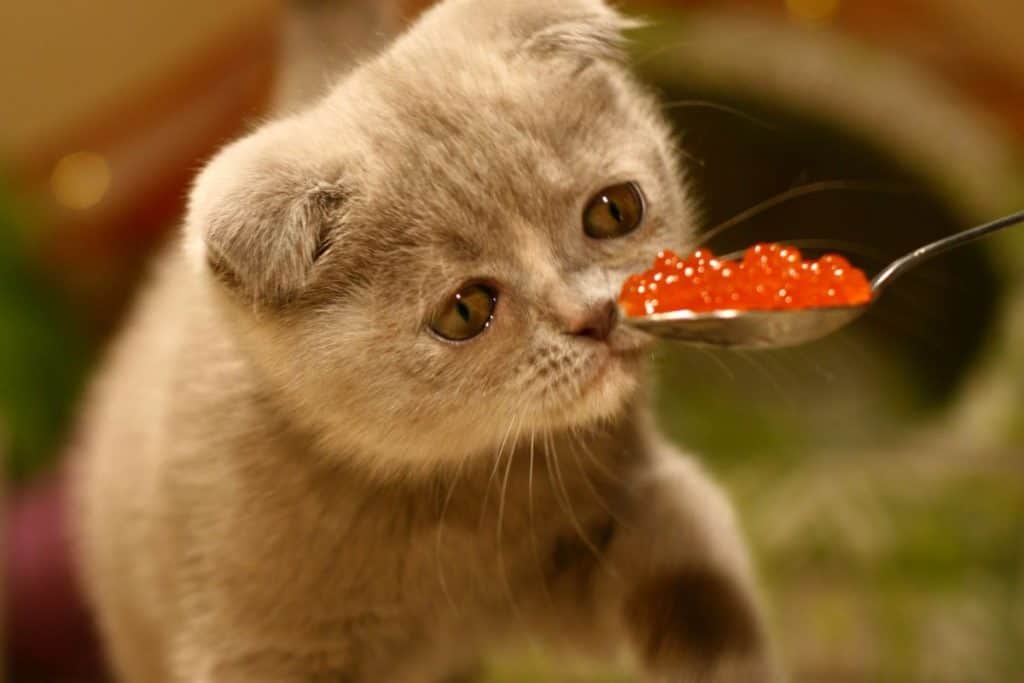We all like to spoil our kitties and give them the best of the best, but what happens when they tend to overindulge? Cat treats are created to give them something tasty to snack on in-between meals, but sometimes our cats can become a little too attached to them. Whilst cat treats are not harmful in moderation. They can become so if you give your kitty too much. Cat treats are not packed with the nutrients your cat needs as part of their everyday diet. Fear not if your beloved pet seems a little too attached to the treats. Here is everything you need to know about what to do if your cat only eats treats.
Often the problem is excess in how much and how frequently you are giving your cat treats. If they become too accustomed to treats, they may rely on them instead of their usual food. There may be other factors, but in general, it is a habit they will have to be trained out of.
An excess in treats may not be the only cause for your cat’s reliance on them. Something about their environment might be bothering them and triggering strange eating habits. They may be avoiding their regular food in favor of more tasty and comforting treats to cope. To combat this, you must first find out what the cause of your cat’s new habit is, and then you can address it further.
Identifying the Cause of the Problem
Cats are finicky creatures, and it can be hard to read them sometimes. When your cat refuses to eat their regular food but jumps at the chance to eat treats, you need to identify why that is.
Firstly, examine how often you give your cat treats. Treats shouldn’t make up more than 10% of your cat’s daily calorie intake. If you give your cat, multiple treats in-between meals every day. Your kitty may start to rely on them for sustenance.
Other causes for your cat’s shift in diet may be their environment, routine, or changes in the household. These things may be distressing them and causing them to act in strange ways. Cats may over-eat or refuse to eat due to stress or insecurity.
Too Many Treats
When you love your cat a lot, it is tempting to spoil them, but you have to consider what is best for them in the long run. As has been stated, vets suggest that treats should make up no more than 10% of a cat’s daily calorie intake. Some suggest it should be even lower, at 5%.
If you are feeding your cat multiple treats a day and to the extent they feel they can rely on their treats instead of their food, you are likely giving them too much. The usual amount of treats to give a cat is one or two every two days.
Some owners don’t give their cat treats at all and, instead, make sure they find their regular meals fulfilling and tasty.
Balance is what is most important, and if your cat is leaning too heavily on their treats, you may just be providing them with too many.
A New Situation
A sudden overindulgence in treats may not just stem from your cat becoming too used to them. If your cat has started rejecting their food and the only way you can get them to eat is by giving them treats, something about their living situation may be distressing them.
If something has recently changed about your household that could affect them, this could be the cause of their new behavior. Perhaps your house is nosier or busier than usual, maybe someone new has moved in or out, or maybe you’ve got a new pet.
Perhaps the change is big, like you’ve moved to a new house, or perhaps it is a small change, like a new cat food brand. Look at your cat’s behavior since they started rejecting their food and what might have changed about their day-to-day life to cause a shift in behavior.
What Happens if Your Cat Eats Too Many Treats
Worst-case scenarios here include your cat becoming too reliant on their treats and ignoring their regular food. As well as this, if your cat eats too many treats, they run the risk of becoming obese.

Cat treats are high in calories and often contain a lot of fat and sodium. An excess of these things can cause multiple health problems, including diabetes. If your cat has become so reliant on treats they make up all of their diet, this risk runs even higher.
You can imagine the health risks of a human only eating fast food or dessert and never anything else, and the case is much the same with cats who only eat treats.
Training Your to Eat Cat Food if They Are in a New Situation
The thing that is distressing your cat might be temporary or fixable. If this is the case, you just have to adjust them to their new situation for the time being.
If something about your cat’s feeding area is disturbing them, try moving them to an even quieter, more secure location. Sit with them and coax them to eat. Try to make them feel at ease and comfortable eating their regular food again.
You may have to repeat this routine until your cat feels comfortable with whatever the new situation is and can go back to eating their food by themselves.
Outside of feeding times, try and adjust your cat to the new situation directly. If it is a new place, person, or pet, there are a lot of guides on how to acclimate your cat to new things.
Research thoroughly and try to get your cat to the point of being comfortable with its permanent new environment.
As long as you can provide your cat with a safe and stable home and can prove to them that they are secure, they should eventually adjust to their new surroundings and go back to their regular diet.
Training Your Cat Back if They Are Too Reliant on Treats
Weaning your cat off treats and back onto their regular diet may take some discipline and repetition, but they will get there eventually. Start by limiting their treat intake by cutting the amount you give them daily in half.
Mix in tasty treats or wet foods with their regular dry pellets to distract them from the lack of treats and to entice them to eat from their bowls more. Sit with them and encourage them to eat. Try not to leave until they’ve at least eaten some food, and reward them with petting and encouragement to show them that this is your desired outcome.
Every day give them fewer treats outside of meals and add tasty incentives to their regular meals. Sit with them to make sure they are eating, and after a while, leave them alone to eat and observe them from outside of the room. This process may take some adjusting and repeating, but your end goal should be that they are eating their food with little to no treats regularly.
Things to Consider
If your cat is underweight, obese, or has other diagnosed health problems, it is very important that they are eating a healthy diet. This is also true, particularly for older cats, whose immune systems won’t be as robust as they used to be.

A cat that is only eating treats and already has health issues is at a huge risk of increasing those health issues. This can be severe to the point of fatality if not treated correctly. Cats can experience heart attacks, liver problems, and many other painful and dangerous diseases when their diets are unhealthy.
If your cat is seriously refusing to eat anything other than treats despite all of your efforts, you may want to take them to a vet to get them diagnosed. There may be some mental or physical problem beyond your control, and a vet will advise you on how best to deal with your cat’s specific problem.
When considering what treats to give your cat, anything made for humans outside of plain meats is ill-advised. A lot of ingredients put into human food can be extremely unhealthy and even poisonous for cats, so it’s best not to take a chance. Even plain meats in excess aren’t good for your kitty.
Conclusion
The most common reasons why your cat is only eating treats are either they’ve become too reliant on them, or they are distressed and are using their treats to cope. If your cat is too reliant on treats, you need to train them off of them and back onto their regular diet.
If something has changed about your home that is distressing your cat, you need to adjust them slowly. Provide them with a secure environment to help them eat while they acclimatize. It may take some time, but eventually, your cat should start eating their regular food again.
It is especially important for cats with underlying health problems to have a stable diet, and human food should not be provided to your cats as treats. If you have tried everything and the problem persists, it is advised to visit the vet, as the problem may be out of your control.
You may also be interested in:




